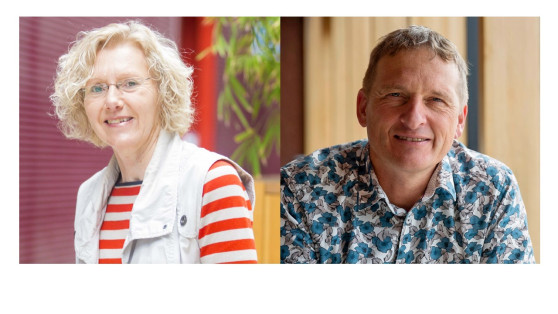Tales of time and scale: Uncovering hidden ingredients of our universe

An interdisciplinary project co-led by Professor Renate Meyer and Professor Richard Easther from Waipapa Taumata Rau – the University of Auckland, has won a Marsden Fund Council Award to investigate the origins and contents of our universe
Marsden Fund Council Awards were created to support outstanding researchers to pursue ambitious interdisciplinary research. This year, the Council has supported two of these major awards.
This project’s New Zealand researchers have expertise in fundamental physics, statistics, and astronomy, and will partner with international collaborators to share data, tools, and ideas.
They seek to explore "hidden" ingredients of our universe – components which aren’t yet visible or understood. For example, they’ll analyse the number and type of interstellar objects travelling between stars, with implications for how planets are formed.
They’ll study the population of white dwarfs, neutron stars, and black holes in binary systems in our Milky Way galaxy – objects formed at the end of the life cycles of stars.
They’ll trace the halo of dark matter that surrounds our galaxy and investigate whether dark matter can influence mergers of supermassive black holes. They’ll ask whether our universe contains material that mimics both dark matter and dark energy.
Finally, they’ll try to solve mysteries about an early phase after the Big Bang, when the universe can contain tiny clumps of matter smaller than atoms but held together by their own gravity, by evaluating the properties of gravitational waves produced at the time.
The project will build connections between New Zealand, the Laser Interferometer Space Antenna (LISA) mission and the Vera Rubin Observatory. LISA is a major European Space Agency mission now under construction which will detect gravitational waves emitted by multiple sources in the evolving universe. Rubin, funded through the USA, is currently commissioning a major optical telescope that feeds the world’s largest digital camera to collect images of the southern night sky over the next decade, detecting transient events like supernovae and moving objects like asteroids and comets.
As they pursue the answers to these questions, the team will expand New Zealand’s national capabilities in advanced statistics, space technology, computational science, machine learning, and artificial intelligence. These skills will be vital to our growing high-tech industry and could enable a range of other innovative technologies.

Professor Renate Meyer (left) and Professor Richard Easther (right) (photo credits: University of Auckland)
